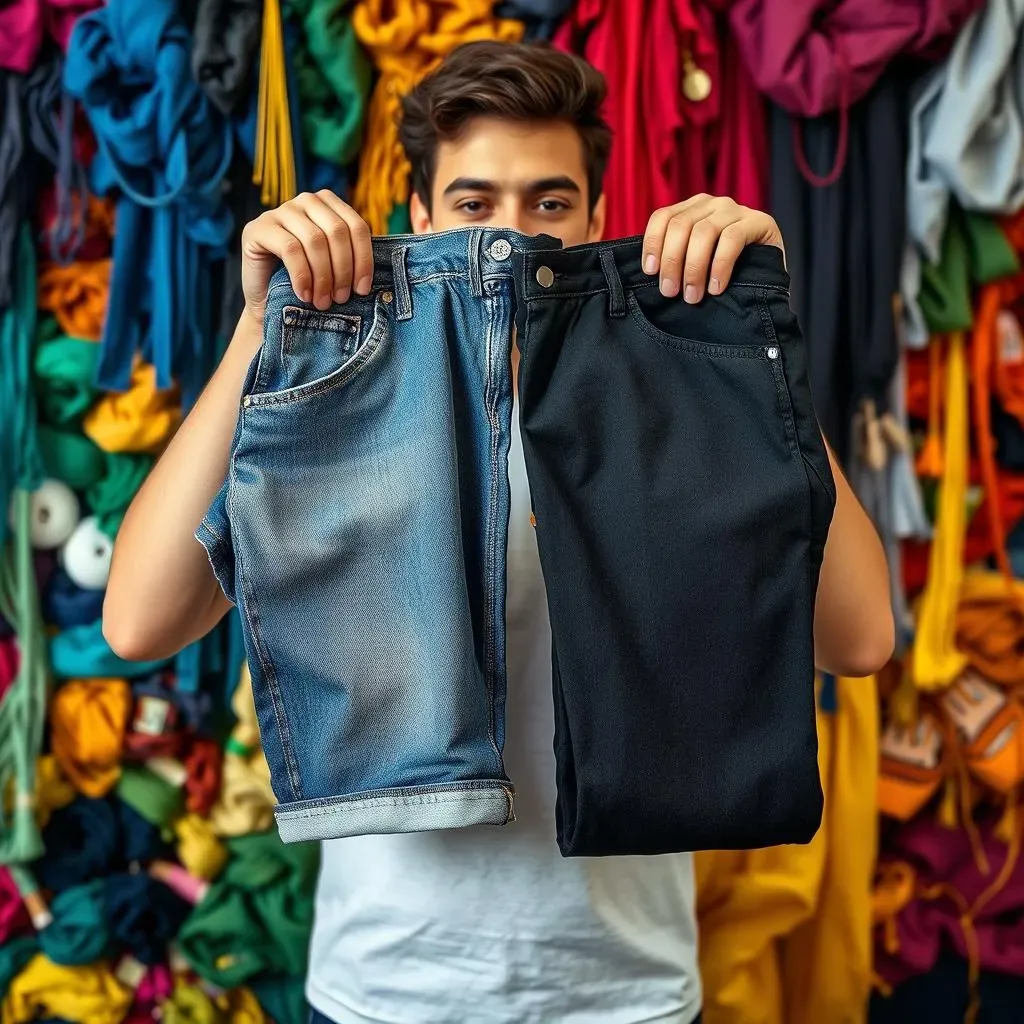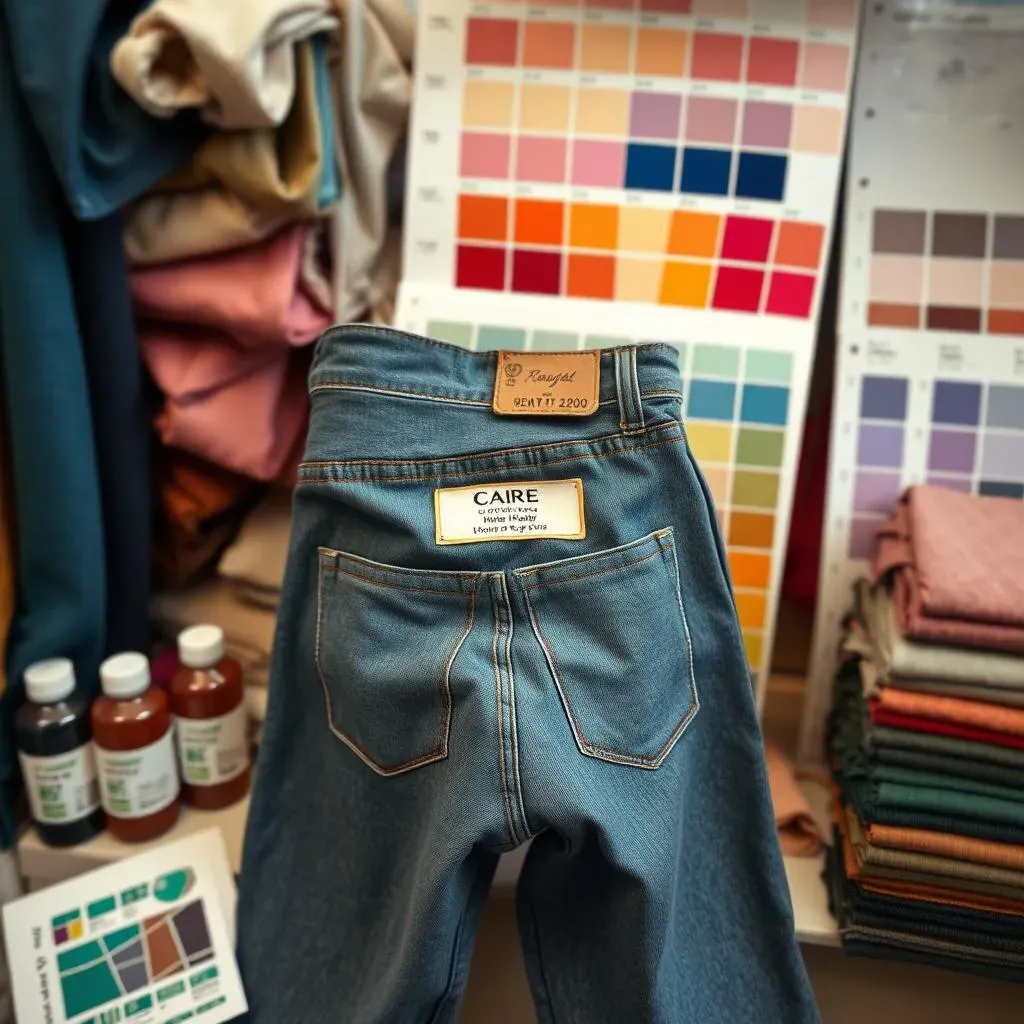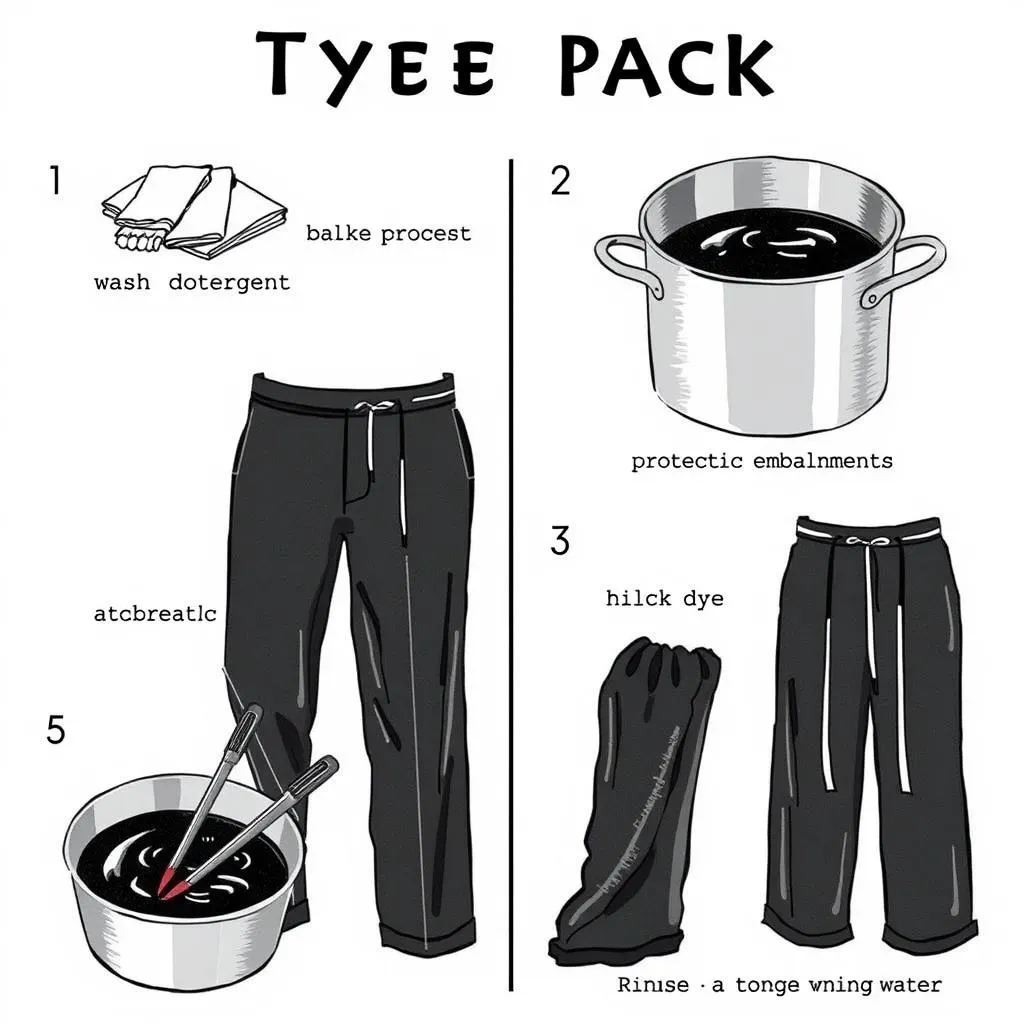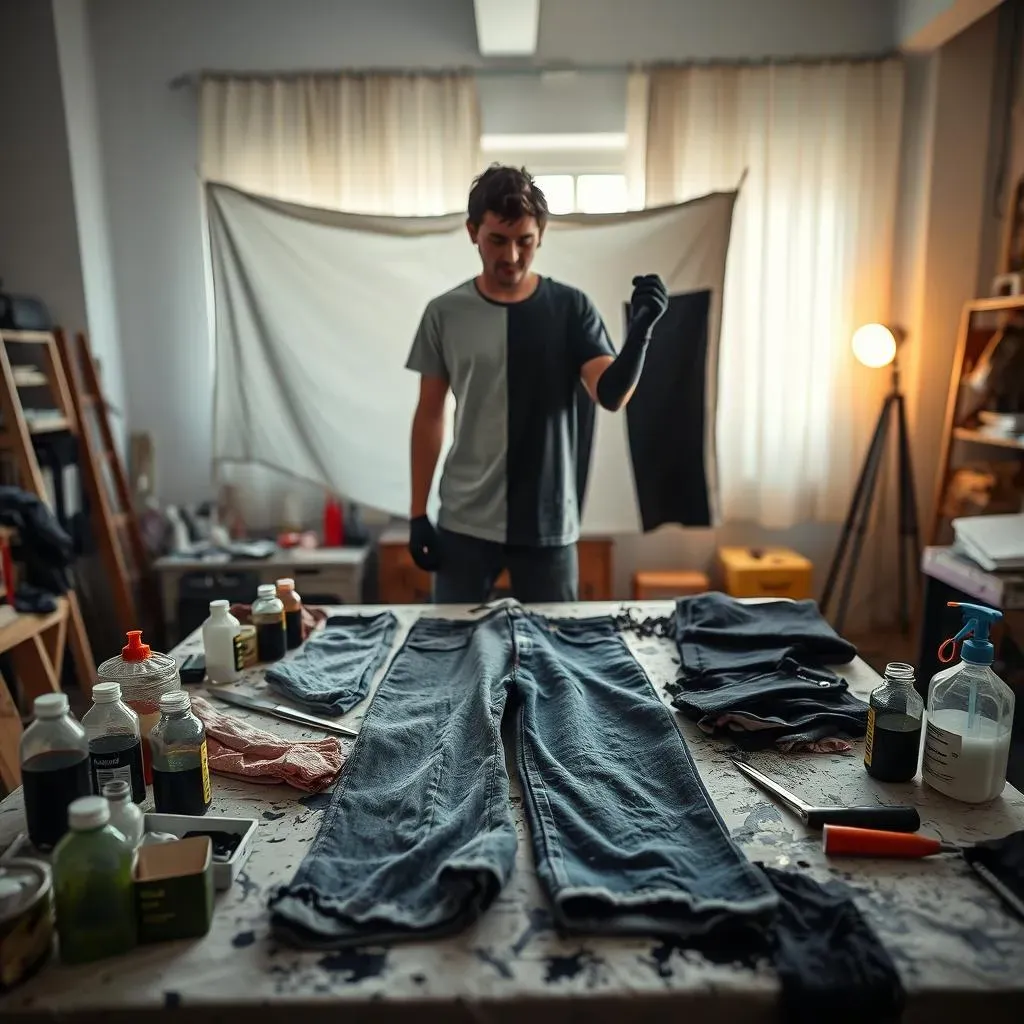Table of Contents
Have you ever looked at your favorite pair of pants and thought, "Can you dye pants black?" Maybe they've faded, lost their vibrancy, or you simply want a change. This comprehensive guide explores the exciting world of fabric dyeing, specifically focusing on transforming your pants into a sleek, stylish black. We'll unravel the mysteries of fabric types and dye selection, ensuring you choose the right tools for the job. Don't worry if you're a dyeing newbie; our step-by-step instructions are designed for all skill levels, guiding you through each process with clarity and precision. We'll cover everything from preparing your pants to achieving a deep, even black color, and addressing common issues like uneven dyeing or color bleeding. Whether you're aiming for a classic black or a unique shade, this article empowers you to achieve professional-looking results at home, breathing new life into your wardrobe. Get ready to discover the transformative power of fabric dye and answer that burning question: can you dye pants black? Yes, you absolutely can!
Can You Dye Pants Black? Exploring the Possibilities

Can You Dye Pants Black? Exploring the Possibilities
Why Dye Your Pants Black?
Let's be honest, sometimes our favorite pants just lose their pizzazz. Maybe they've faded from countless washes, or perhaps you're simply craving a fresh new look. Dyeing your pants black offers a fantastic way to revitalize your wardrobe without breaking the bank. It’s a surprisingly simple process, offering a satisfying sense of accomplishment and a chance to unleash your creativity. Think of it as a mini-makeover for your clothing. You can transform a pair of boring, worn-out jeans into a stylish staple, or give a beloved pair of chinos a dramatic new color. Plus, dyeing your own clothes is more environmentally friendly than buying new ones!
And if you're feeling adventurous, why stop at black? Experiment with different shades to create a unique, personalized look. You could even try a cool ombre effect for a truly eye-catching style. The possibilities are endless!
What Kinds of Pants Can Be Dyed Black?
The great thing about dyeing pants is that it's surprisingly versatile. Most natural fabrics like cotton, linen, and even some blends can be dyed successfully. However, the success of dyeing depends heavily on the fabric content. Synthetics like polyester often require specific dyes designed for those materials. Before you start, always check the care label of your pants to determine the fabric composition. This will guide you in selecting the appropriate dye for best results. Knowing your fabric type is half the battle. For more information on how to determine which dye to use, check out our article on dyeing leggings black, as many of the same principles apply.
Remember that some fabrics might not take the dye as evenly as others. For instance, heavily textured fabrics might show some variation in color depth. But don't let that discourage you! With a little practice and the right techniques, you can achieve amazing results. A little experimentation is all part of the fun!
Fabric Type | Dye Type | Notes |
|---|---|---|
Cotton | Fiber Reactive | Generally easy to dye |
Linen | Fiber Reactive | May require longer dyeing time |
Polyester | Disperse | Requires higher temperatures |
Is Dyeing Pants Black Difficult?
While it might sound intimidating at first, dyeing pants black is surprisingly straightforward. With the right tools, techniques, and a bit of patience, even beginners can achieve fantastic results. The process involves preparing the fabric, mixing the dye, submerging the pants, and carefully rinsing them. There are many resources available online and in craft stores to guide you through each step. There are several methods you can try, from using a washing machine to a simple pot on the stove. We'll be covering these in more detail later in this article.
Think of it like baking a cake; you need the right ingredients and to follow the instructions carefully. But even if your first attempt isn't perfect, don't be discouraged! It's all part of the learning process. You can always try again, and each time you'll gain valuable experience. And if you’re curious about other similar projects, you might also find our guide on yoga pants vs leggings helpful.
- Prepare your pants
- Mix the dye
- Submerge and dye
- Rinse thoroughly
Choosing the Right Dye for Your Pants: Fabric Matters

Choosing the Right Dye for Your Pants: Fabric Matters
Understanding Fabric Composition
Before you even think about dipping your pants into a dye bath, you NEED to know what they're made of! Different fabrics react differently to dyes. Cotton, linen, and rayon are generally happy campers and take dye beautifully. However, synthetics like polyester are a whole different ball game. They need special dyes formulated for their unique structure. Always check that care label – it's your dyeing bible! Ignoring this crucial step could lead to disappointing results, or worse, ruined pants. Think of it like trying to bake a cake with the wrong ingredients – it's just not going to work.
Knowing your fabric's composition is key to choosing the right dye. If you're unsure, a quick online search or a trip to a fabric store can provide clarity. Don't be afraid to ask for help! Fabric experts are usually happy to assist. For more detailed information on fabric types and their suitability for dyeing, you might find our article on dyeing leggings black helpful, as many of the same principles apply.
- Check the care label carefully.
- Identify the main fabric composition (cotton, linen, polyester, etc.).
- Research the appropriate dye type for your fabric.
Choosing the Correct Dye Type
Now that you've identified your fabric, it's time to pick the right dye! For natural fibers like cotton and linen, fiber-reactive dyes are your best bet. These dyes create a strong chemical bond with the fabric fibers, resulting in vibrant, long-lasting color. For synthetics like polyester, you'll need disperse dyes, which are specifically designed to penetrate these more resilient materials. Using the wrong dye on the wrong fabric is a recipe for disaster – you’ll end up with a very pale, uneven color, or possibly no color at all!
Don't just grab any old dye; read the instructions carefully! Different dyes have different requirements for temperature, soaking time, and even the addition of salt or vinegar. Following the instructions will ensure the best possible results and prevent unexpected surprises. It's worth investing a little time in understanding the specific dye you've chosen. If you're feeling overwhelmed, many craft stores offer helpful staff who can guide you through the selection process. For a broader understanding of different fabric types and their properties, you might find our article on yoga pants and leggings interesting.
Fabric Type | Recommended Dye Type |
|---|---|
Cotton, Linen, Rayon | Fiber-Reactive |
Polyester, Nylon | Disperse |
Wool, Silk | Acid |
Considering Dye Brands and Quality
Not all dyes are created equal! Some brands are known for their vibrant colors and long-lasting results, while others might fade or bleed more easily. Researching different brands before you buy is a great idea. Read reviews, compare prices, and look for dyes that are specifically designed for the fabric you're working with. Investing in a high-quality dye can make a big difference in the final outcome. Cheap dyes can often be frustrating, leading to disappointing results, so it’s worth spending a little more to get a better result.
Remember, dyeing is a process, and the quality of your dye plays a significant role in the final outcome. Think of it as using the best ingredients for baking a cake. You wouldn't use low-quality flour and expect a delicious result, right? The same principle applies to dyeing fabrics. Choosing a reputable dye brand ensures that you get a reliable product that will deliver on its promises. A little research up front can save you time, frustration, and maybe even a ruined pair of pants!
"The best dye is the one that works best for YOUR fabric." - Anonymous Dyeing Enthusiast
Dyeing Pants Black: StepbyStep Instructions and Techniques

Dyeing Pants Black: StepbyStep Instructions and Techniques
Preparing Your Pants for the Dye Bath
Before you even think about dye, prep your pants! First, give them a good wash to remove any dirt, oils, or fabric softener that could interfere with the dyeing process. This ensures even color absorption. Don't use fabric softener—it creates a barrier that prevents the dye from penetrating the fibers. Once washed, let your pants air dry completely. This is important because moisture can affect the dyeing process and lead to uneven results. If you’re dyeing a pair of jeans, check for any repairs or stitching that might be affected by the dye. If you have multiple pairs, make sure to do this for each pair before you begin.
Next, consider any embellishments or details on your pants. Embroidery, metallic threads, or certain types of prints might not take the dye well or could be damaged. If you have any such details, you might consider protecting them with masking tape or another method before dyeing. For more detailed instructions on prepping fabrics for dyeing, you might find our article on dyeing leggings helpful.
- Wash pants thoroughly (no softener!).
- Air dry completely.
- Protect any embellishments if necessary.
Mixing the Dye and Dyeing Your Pants
Now for the fun part—mixing the dye! Follow the instructions on your dye package precisely. The amount of dye, water temperature, and any additional ingredients (like salt or vinegar) are crucial for achieving the desired color. Measure everything carefully to avoid uneven coloring or disappointing results. It’s best to prepare your dye bath in a large container like a stainless-steel pot or a plastic tub that is large enough to completely submerge your pants. Remember that the dye bath should be hot, but not boiling, and you'll need to keep the temperature consistent throughout the dyeing process. Remember to wear gloves to protect your hands from the dye.
Once your dye bath is ready, carefully submerge your pants, ensuring they're completely saturated. Use tongs or gloves to gently agitate the pants periodically throughout the dyeing process, which helps to ensure even color distribution. The recommended dyeing time varies depending on the dye type and fabric, so check your dye instructions carefully. After the dyeing time is complete, carefully remove your pants from the dye bath. For a more detailed breakdown of the dyeing process, including tips for various fabric types, you might find our article on yoga pants and leggings useful.
Step | Instructions |
|---|---|
1 | Prepare the dye bath according to package instructions. |
2 | Submerge pants completely. |
3 | Agitate gently. |
4 | Dye for the recommended time. |
5 | Remove pants carefully. |
Troubleshooting Common Problems When Dyeing Pants Black

Troubleshooting Common Problems When Dyeing Pants Black
Uneven Dyeing: A Common Culprit
Ah, the dreaded uneven dye job! It's a common frustration, but thankfully, often preventable. The most frequent cause is inadequate preparation. Make sure your pants are thoroughly clean and free of any oils or residues that could repel the dye. Another culprit is insufficient agitation during the dyeing process. Remember to gently but consistently move your pants around in the dye bath to ensure even saturation. Finally, make sure you're following the dye manufacturer's instructions precisely regarding temperature and dyeing time. A quick check of our guide on dyeing leggings black might help too, as many of the same issues apply.
Sometimes, the fabric itself can contribute to uneven dyeing. Heavily textured fabrics or those with a complex weave might show slight variations in color depth. In these cases, pre-soaking the fabric in a solution of water and vinegar can help to improve dye absorption. Don't despair if you encounter uneven dyeing; it's often fixable with a second attempt, paying closer attention to the techniques mentioned above. Remember, practice makes perfect!
- Ensure thorough cleaning before dyeing.
- Agitate pants consistently during the process.
- Follow dye instructions precisely.
- Pre-soak textured fabrics.
Color Bleeding: Preventing and Addressing
Color bleeding is another common issue, especially with darker colors like black. This happens when the dye isn't properly fixed to the fabric fibers, leading to color leaching out during washing. To prevent this, always use a high-quality dye that's specifically designed for your fabric type. Following the dye manufacturer's instructions precisely, particularly regarding rinsing and washing, is crucial. A thorough rinse after dyeing is essential to remove any excess dye that hasn't bonded to the fabric.
If you do experience color bleeding, don't panic! You can often mitigate the problem by washing the dyed pants separately from other clothes for the first few washes. Using a color-catching sheet can also help to absorb any excess dye. In some cases, re-dyeing the pants might be necessary to achieve a more permanent color. If you're dealing with a particularly stubborn case of bleeding, you might want to consult our post on yoga pants and leggings for some additional tips and tricks. Remember, patience and persistence are key to success in dyeing!
Problem | Solution |
|---|---|
Color Bleeding | Use high-quality dye, rinse thoroughly, wash separately. |
Uneven Dyeing | Pre-treat fabric, agitate consistently, follow instructions. |
